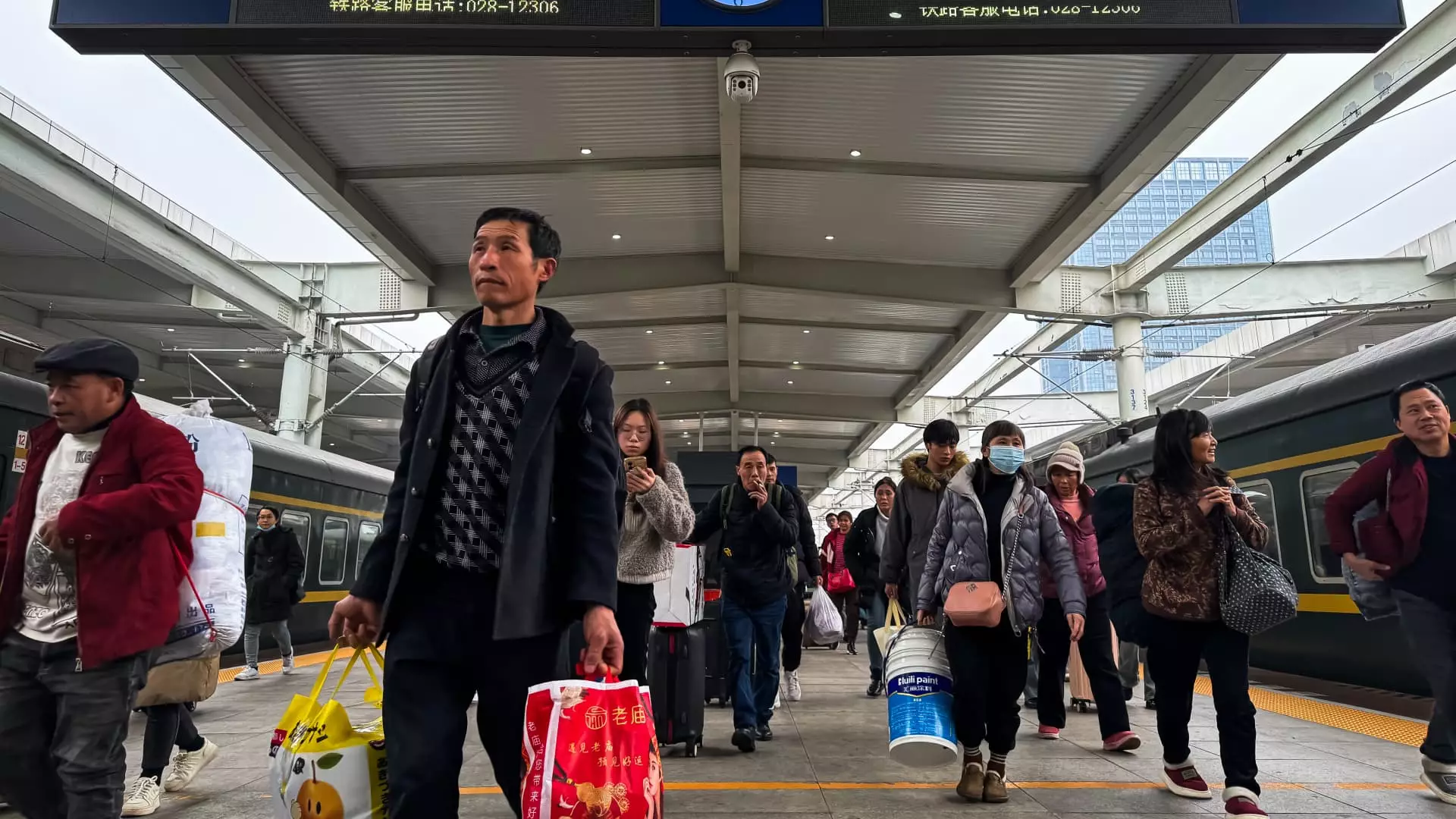As China grapples with economic headwinds and diminishing consumer demand, there is growing scrutiny on the government’s ability to implement effective fiscal support. Despite policymakers announcing interest rate cuts and stimulus measures, the anticipated impacts have yet to manifest. With the official GDP figures for 2024 set to be released soon, analysts remain cautious about the country’s economic recovery in light of structural issues.
Current Economic Landscape
China’s economy is facing a multifaceted challenge. Consumer prices have risen only 0.5% in 2024 when volatile food and energy costs are excluded, marking the weakest growth in a decade. This lackluster performance raises alarms about deflation as consumer spending continues to dwindle. Yin Yong, the mayor of Beijing, underscored these trends in a recent report, indicating that the capital targets a 2% consumer price inflation rate by 2025, aiming to revamp its tech sector to aid economic growth. However, the absence of immediate and robust fiscal policies raises questions about the effectiveness of these goals.
Policymakers have acknowledged the pressing need for more substantial support, yet specifics regarding fiscal stimuli are awaited until March’s annual parliamentary meeting. Institutions such as Goldman Sachs and BlackRock have expressed skepticism regarding the current stimulus efforts, illustrating a growing sentiment of caution regarding long-term investments in China.
One significant area of concern is the real estate market, which has faced severe turbulence since the government’s crackdown on developers’ debt. The ripple effects of these policies, compounded by the impact of the COVID-19 pandemic, have created vulnerabilities that are difficult to mitigate. While there have been recent signs of recovery, including a surge in new home sales in major cities, the overall health of this sector remains uncertain. Analysts are indicating that high inventory levels in smaller cities may lead to further price declines, suggesting that the sector has not yet hit bottom.
The government’s latest measures aim to stabilize the real estate market by ensuring the completion of under-construction projects. However, the broader transition away from dependence on real estate for economic growth appears fraught with obstacles. Real estate has historically played a pivotal role in fueling China’s economy, making it challenging for policymakers to pivot to other growth drivers.
The Chinese government has introduced a trade-in subsidy program aimed at stimulating consumer spending, particularly in the electronics sector. An investment of 150 billion yuan ($20.46 billion) has been allocated for trade-in subsidies on home appliances and electric vehicles. However, the efficacy of these measures remains in question, as experts fear that the initial boost in sales may be short-lived.
Nomura’s Chief China Economist, Ting Lu, warned that new home sales and the broader appliance market may not sustain growth, limiting the effectiveness of the trade-in program. The success of these financial incentives in genuinely propelling consumer demand is still an open question, especially as the economy heads into uncertain waters.
The economic challenges faced by China are further complicated by its fraught relationship with the United States. Tensions have risen due to export controls and the push for national security prioritization in key sectors. Consequently, many European companies operating in China find themselves pressured to localize their operations in response to these new dynamics. This factor not only increases operational costs but may also stifle productivity, undermining competitiveness in the global marketplace.
Chinese authorities emphasize the need to marry security with growth, with policy adjustments focusing on consumption over investment efficiency in the current climate. Prominent figures within the Chinese government have reinforced this sentiment, indicating that the key to revitalizing the economy lies in stimulating consumer demand.
While there are glimmers of hope in China’s economic recovery, the government faces formidable structural challenges. Domestic demand remains sluggish, real estate markets are under strain, and international relations add an additional layer of complexity to the economic landscape. Policymakers need to take decisive action to provide robust fiscal support and navigate the turbulent waters ahead. It remains to be seen whether upcoming parliamentary meetings will yield fresh strategies capable of reinvigorating China’s economy and positioning it for sustainable growth in a rapidly changing global environment. The journey forward will require careful management of both domestic policies and international relations to foster a resilient economic recovery.


Leave a Reply